The Well-Tempered Ear
Classical music: This weekend, the Madison Symphony Orchestra celebrates Valentine’s Day with violinist Pinchas Zukerman and cellist Amanda Forsyth in the Romantic “Double Concerto” by Brahms
Leave a Comment
PLEASE HELP THE EAR. IF YOU LIKE A CERTAIN BLOG POST, SPREAD THE WORD. FORWARD A LINK TO IT OR, SHARE IT or TAG IT (not just “Like” it) ON FACEBOOK. Performers can use the extra exposure to draw potential audience members to an event. And you might even attract new readers and subscribers to the blog.
By Jacob Stockinger
This coming weekend, the Madison Symphony Orchestra, under the baton of John DeMain, will celebrate Valentine’s Day.
The program “Romantic Encounter” examines the brashness of French composer Hector Berlioz’s “Le Corsaire” Overture, as well as the thundering seriousness of American composer Aaron Copland’s Symphony No. 3.
The husband-and-wife duo (below) of violinist Pinchas Zukerman, and cellist Amanda Forsyth make their return to Madison to reprise their performance of German composer Johannes Brahms’ Double Concerto for Violin and Cello in A minor. (You can hear the passionate slow movement in the YouTube video at the bottom.)
Performances will be held in Overture Hall, 201 State Street, on Friday, Feb. 14, at 7:30 p.m.; Saturday, Feb. 15, at 8 p.m.; and Sunday, Feb. 16, at 2:30 p.m.
Tickets are $19 to $95. See below for details.
Says maestro DeMain (below, in a photo by Greg Anderson) about the world-renowned duo: “The married team of Pinchas Zukerman and Amanda Forsyth return to recreate their exciting interpretation of the Brahms Double Concerto for violin, cello and orchestra.
“One of Berlioz’s finest overtures, the exhilarating Le Corsaire opens the concert. And Aaron Copland’s majestic, powerful and lyrical Third Symphony — which is one of Copland’s great masterpieces and includes his Fanfare for the Common Man — is heard on the second half of the program.”
Eight minutes long, Berlioz’s swashbuckling “Le Corsaire” was composed in Nice, France, after the final break-up of his marriage. The composer resided in a tower above the sea, which explains the ruined fortification’s depiction in his overture. “Corsaire” translates to “a ship used for piracy,” but this meaning is not related to the work.
The Double Concerto was Brahms’ final work for orchestra. He composed the concerto for his old but estranged friend, violinist Joseph Joachim, as well as for cellist Robert Hausmann. With few recent precedents, the closest comparison to this work would be the Baroque concerto grosso, in which a soloist or small group is contrasted with an entire ensemble.
Copland’s monumental Symphony No. 3 was commissioned by conductor Serge Koussevitsky and the Boston Symphony Orchestra. The work perfectly reflects the spirit of post-war America and impressively holds the title of “Greatest American Symphony.” In writing this piece, Copland (below) borrowed from himself by incorporating his triumphant Fanfare for the Common Man.
ABOUT PINCHAS ZUKERMAN
With a celebrated career encompassing five decades, Pinchas Zukerman reigns as one of today’s most sought-after and versatile musicians — violin and viola soloist, conductor and chamber musician. He is renowned as a virtuoso, admired for the expressive lyricism of his playing, singular beauty of tone, and impeccable musicianship, which can be heard throughout his discography of over 100 albums.
Born in Tel Aviv, Zukerman came to the United States where he studied at the Juilliard School with Ivan Galamian as a recipient of the American-Israel Cultural Foundation scholarship. He received the National Medal of Arts from President Ronald Reagan and is a recipient of the Isaac Stern Award for Artistic Excellence in Classical Music.
ABOUT AMANDA FORSYTH
The Canadian and Juno Award-winning Amanda Forsyth is considered one of North America’s most dynamic cellists. She has achieved her international reputation as soloist, chamber musician and was principal cello of Canada’s National Arts Centre Orchestra from 1999 to 2015. Her intense richness of tone, remarkable technique and exceptional musicality combine to enthrall audiences and critics alike.
PROGRAM NOTES, TICKETS AND EVENT DETAILS
The lobby opens 90 minutes prior to each concert. The MSO recommends that concert attendees arrive early for each performance to make sure they have time to pass through Overture Center’s security stations, and so they can experience the Prelude Discussion that takes place one hour before each concert.
Program notes are available at: http://www.allsenmusic.com/NOTES/1920/5.Feb20.html
- Single Tickets are $19-$95 each and are on sale now at: https://madisonsymphony.org/event/romantic-encounter/through the Overture Center Box Office at 201 State Street, or by calling the Box Office at (608) 258-4141. Fees apply to online and phone sales.
- Groups of 10 or more can save 25% by calling the MSO office at (608) 257-3734. For more information, visit, https://madisonsymphony.org/concerts-events/buy-tickets/group-discounts/.
- Student rush tickets can be purchased in person on the day of the concert at the Overture Center Box Office at 201 State Street. Students must show a valid student ID and can receive up to two $15 or $20 tickets. More information is at: https://madisonsymphony.org/concerts-events/buy-tickets/student-rush/
- Seniors age 62 and up receive 20% savings on advance and day-of-concert ticket purchases in select areas of the hall.
Discounted seats are subject to availability, and discounts may not be combined.
Major funding for the February concert has been provided by NBC 15; The Madison Concourse Hotel and Governor’s Club; Marvin J. Levy; Fred and Mary Mohs; Nancy Mohs; and David and Kato Perlman.
Additional funding has been provided by Robert Benjamin and John Fields; Boardman and Clark LLP; Forte; Barbara Melchert and Gale Meyer; and the Wisconsin Arts Board with funds from the State of Wisconsin and the National Endowment for the Arts.
Tags: #AaronCopland, #AmandaForsyth, #AmericanComposer, #BaroqueMusic, #BlogPost, #BlogPosting, #BoardmanandClark, #BostonSymphony, #BoxOffice, #CanadianMusician, #CelloConcerto, #ChamberMusic, #CityofMadison, #ClassicalMusician, #CommissionedMusic, #ConcertoGrosso, #DoubleConcerto, #FacebokPosting, #FacebookPost, #FanfarefortheComonMan, #FredMohs, #GermanComposer, #Governor'sClub, #HectorBerlioz, #husband-and-wife, #InternationalReputation, #IsaacStern, #IsraeliMusician, #IvanGalamian, #JacobStockinger, #JohannesBrahms, #JohnDeMain, #JosephJoachim, #JuilliardSchool, #JunoAward, #JunoAwards, #JunoAwrd, #KatoPerlman, #LawFirm, #LeCorsaire, #LyricalMusic, #MadisonConcourseHotel, #MadisonSymphonyOrchestra, #MeadWitterSchoolofMusic, #MusicalInterpretation, #NationalArtsCentreOrchestra, #NationalEndowmentfortheArts, #NationalMedalofArts, #NBCNews15, #NorthAmerica, #OrchestralMusic, #OvertureHall, #PinchasZukerman, #Pre-concertLecture, #PrincipalCellist, #ProgramNotes, #RomanticMusic, #RonaldReagan, #SeniorCitizen, #SergeKoussevitsky, #StateOfWisconsin, #TelAviv, #TonalBeauty, #UnitedStates, #UniversityofWisconsin-Madison, #ValentinesDay, #ViolinConcerto, #ViolinistVirtuoso, #WisconsinArtsBoard, #YouTubevideo, Aaron Copland, albums, Amanda Forsyth, America, American, artistic, Arts, audience, availability, award, Baroque, baton, beauty, Berlioz, blog, Boardman and Clark, born, borrow, Boston, Boston Symphony, box office, Brahms, brash, break-up, Canada, Canadian, career, CD, celebrated, cellist, Cello, Chamber music, Classical music, classicalmusic, commission, common, Compact Disc, comparison, composer, Concert, concerto, Concerto Grosso, conductor, Copland, critics, day, decade, depiction, details, discography, discount, discussion, donor, donors, double concerto, duo, dynamic, enthrall, estranged, event, excellence, exciting, expressive, Facebook, Fanfare, Fanfare for the Common Man, final, forward, France, French, Friday, Friday night, friend, funding, funds, German, Germany, Governor's Club, gravitas, great, greatest, group, hall, hear, Hector Berlioz, Holiday, husband, ID, impeccable, impressive, incorporate, international, interpretation, Isaac Stern, Israel, Israeli, Ivan Galamian, Jacob Stockinger, Johannes Brahms, John DeMain, Joseph Joachim, Juilliard School, Juilliard School of Music, Juna Award, Juno, Kato Perlman, law firm, Le Corsaire, like, link, lyrical, Madison, Madison Concourse Hotel, Madison Symphony Orchestra, Maestro, majestic, man, Marriage, married, masterpiece, Mead Witter School of Music, meaning, Mohs, monumental, movement, Music, musical, musicality, Musician, musicianship, National Arts Centre Orchestra, National Endowment for the Arts, National Medal of Arts, NBC15, NEA, Nice, North America, Orchestra, orchestral music, Overture, Overture Center, Overture Hall, passionate, performer, Pinchas Zukerman, play, post, post-war, posting, powerful, pre-concert, Prelude, President, principal, privacy, program, program notes, purchase, recipient, Recordings, recreate, reign, remarkable, renown, reprise, reputation, reside, return, richness, Romantic, Ronald Reagan, ruined, scholarship, sea, seats, security, senior, Serge Koussevitsky, serious, share, ship, show, slow, soloist, spirit, State of Wisconsin, Student, study, Sunday, swashbuckling, symphony, tag, technique, Tel Aviv, thunder, tickets, time, timing, tone, tower, triumphant, U.S., United States, University of Wisconsin-Madison School of Music, University of Wisconsin–Madison, UW-Madison, Valentine, Valentine's Day, valid, versatile, Viola, Violin, violinist, violist, virtuoso, weekend, wife, Wisconsin, Wisconsin Arts Board, world, YouTube
Classical music: A veteran reviewer bids farewell with a rave review of this summer’s last concert by the Willy Street Chamber Players and UW-Madison pianist Christopher Taylor
18 Comments
IF YOU LIKE A CERTAIN BLOG POST, PLEASE SPREAD THE WORD. FORWARD A LINK TO IT OR, SHARE IT or TAG IT (not just “Like” it) ON FACEBOOK. Performers can use the extra exposure to draw potential audience members to an event. And you might even attract new readers and subscribers to the blog.
By Jacob Stockinger
Here is a very special posting, the final review that will be written by frequent guest critic and writer for this blog, John W. Barker.
Barker (below), who is dealing with medical issues, is an emeritus professor of Medieval history at the University of Wisconsin-Madison. He also is a well-known classical music critic who wrote for The Capital Times, Isthmus and the American Record Guide, and who, until two weeks ago, hosted an early music show once a month on a Sunday morning on WORT-FM 89.9. For years, he served on the Board of Advisors for the Madison Early Music Festival and frequently gave pre-concert lectures in Madison.
Please use the comment section to join The Ear in thanking Barker for his many years of public service and wishing him well.
By John W. Barker
I had to miss the first concert this summer by the Willy Street Chamber Players (below) on July 12; and the next one, on July 19, was cancelled because of power failures. But the final one, last Friday night, was well worth waiting for — one of the really memorable events of the year, I think.
The program, performed at the usual near East Side venue of the Immanuel Lutheran Church, 1021 Spaight Street, began with some short items.
First, there was a set of Three Nocturnes (1924) for piano trio — violin, cello and piano — by Ernest Bloch. They contain elements of the Hebraic sound that Bloch cultivated but also had their own individualities, the first two contemplative and the third marked “tempestuoso.” Interesting was Bloch’s alternating uses of muting the strings.
After this came an example of the short pieces for string quartet by the contemporary composer Jessie Montgomery, her “Voodoo Dolls” (2008). Much is packed into this five-minute piece. A few lyrical touches aside, it sounded like a hoedown gone crazy, full of quite novel sounds, including rhythmic thumping on the wood of the instruments.
All that was a curtain-raiser to the big event of the program: the Piano Quintet No. 2 in A major, Op. 81, by Antonin Dvorak. This 40-minute work is one of the composer’s best-known chamber music compositions, and one of the standouts in the whole chamber music literature.
The very opening notes of the first movement bring a flood of warm well-being. (After hearing just that, I commented, “I haven’t felt such happiness in months.”)
The fecundity and richness of invention pervaded the entire work. For me, its high point is the second movement, in which Dvorak (below) used the Czech formula of the dumka, a kind of folk music lament that is paced slow-fast-slow-fast. (You can hear the Dumka movement, played by the Jerusalem Quartet and pianist Stefan Vladar, in the YouTube video below.)
Dvorak liked to play viola in chamber music, and so he always wrote some good things for himself. The sublime passages for viola in this movement were played with such transcendent beauty by Rachael Hauser (below) – who is leaving Madison for New York City — that I felt I was hearing the composer’s voice directly. Put simply, this was one of the greatest examples of chamber-music performance that I have ever heard.
All of the players, many of whom play in the Madison Symphony Orchestra, of course matched remarkable skill with humane vitality and vibrancy.
And a measure of the Willys’ standards was the fact that they were able to draw as a partner no less than that magnificent UW-Madison music school pianist, Christopher Taylor (below), who also performed the same Dvorak Piano Quintet in the 1993 Van Cliburn International Piano Competition, where he won a bronze medal. Much of his excellence here was demonstrated by the fact that he did not play the star, but joined with the Willys in perfect collegial integration.
This ends the Willy Street group’s fifth summer season. As a symbol of vibrancy and fresh spirit, they are among the most important of Madison’s classical music world today. They have drawn steadily growing audiences, and the house was truly packed for this concert. We can only hope that they will continue to brighten that world in the years ahead.
I am now ending my time as a music critic. I can think of no more satisfying a final review to write than of the Willy Street Chamber Players.
Tags: #AmericanRecordGuide, #AntoninDvorak, #AudienceMembers, #BlogPost, #BlogPosting, #BlogReview, #BronzeMedal, #ChamberMusic, #ChristianChurch, #ChristopherTaylor, #ContemporaryComposer, #ContemporaryMusic, #Curtain-Raiser, #CzechMusic, #EastSide, #EmeritusProfessor, #ErnestBloch, #FacebookPost, #FacebookPosting, #FolkMusic, #HebraicMusic, #HighPoint, #ImmanuelLutheranChurch, #InstrumentalMusic, #IsthmusNewspaper, #JacobStockinger, #JerusalemQuartet, #JessieMontgomery, #JohnW.Barker, #LivingComposer, #LyricalMusic, #MadisonEarlyMusicFestival, #MadisonSymphonyOrchestra, #MeadWitterSchoolofMusic, #MedievalHistory, #ModernMusic, #MusicCritic, #MusicReview, #MusicSchool, #NewYorkCity, #PianoQuintet, #PianoTrio, #PowerFailure, #PublicService, #RachelHauser, #RadioHost, #RadioShow, #RadioStation, #StefanVladar, #StringQuartet, #SundayMorning, #TheCapitalTimes, #TheEar, #TheWillys, #UniversityofWisconsin-Madison, #VanCliburn, #VanCliburnInternationalPianoCompetition, #VoodooDolls, #WillyStreetChamberPlayers, #WORT-FM89.9, #YouTubevideo, advisor, ahead, alternating, American Record Guide, Antonín Dvořák, Arts, audience, beauty, best-known, bid, blog, board, brighten, bronze, bronze medal, bronze medalist, cancel, cellist, Cello, Chamber music, Christian, Christopher Taylor, church, Classical music, classicalmusic, collegial, comment, composer, Concert, contemplative, contemporary, crazy, cultivate, Czech, dance, demonstrate, directly, doll, dumka, Early music, earlymusic, east side, emeritus professor, end, Ernest Bloch, event, example, excellence, Facebook, fact, farewell, fecundity, feel, felt, final, flood, folk, folk dance, Folk music, formula, forward, frequent, fresh, great, group, growing, guest, happiness, hearing, Hebraic, high point, History, hoedown, House, humane, Immanuel Lutheran Church, important, individualities, instrument, instrumental music, integration, interesting, invention, items, Jacob Stockinger, Jerusalem, Jerusalem Quartet, Jessie Montgomery, John W. Barker, known, lament, lecture, like, literature, living, Living composer, lyrical, Madison, Madison Early Music Festival, Madison Symphony Orchestra, match, Mead Witter School of Music, measure, medal, medical issues, Medieval, memorable, modern, months, morning, movement, Music, music school, muting, New York City, Newspaper, nocturne, novel, packed, partner, passage, perfect, performer, pervade, Pianist, Piano, Piano Quintet, Piano Trio, pieces, players, post, posting, power, power failure, public service, quintet, Rachel Hauser, Radio, radio show, radio station, rave, reader, recording, remarkable, review, reviewer, rhythmic, rich, richness, satisfying, service, set, share, short, skill, Sound, special, spirit, spread, standards, standout, star, Stefan Vladar, String quartet, strings, sublime, subscriber, summer, Sunday, Sunday morning, symbol, tag, thank, The Capital Times, The Ear, The Willys, three, thump, thumping, time, touch, transcendent, United States, University of Wisconsin-Madison School of Music, University of Wisconsin–Madison, use, UW-Madison, Van Cliburn, Van Cliburn International Piano Competition, venue, Veteran, vibrancy, Viola, Violin, violinist, violist, vitality, voice, Voodoo, Voodoo Dolls, warm, well-being, Willy Street Chamber Players, Wisconsin, Wiscosnin, wood, work, world, WORT-FM 89.9, worth, Writer, year, YouTube
Classical music education: The all-student Madison Youth Symphony Orchestra scores another big success with music by Mozart, Copland and Grieg
1 Comment
By Jacob Stockinger
Here is a special posting, a review written by frequent guest critic and writer for this blog, John W. Barker. Barker (below) is an emeritus professor of Medieval history at the University of Wisconsin-Madison. He also is a well-known classical music critic who writes for Isthmus and the American Record Guide, and who hosts an early music show once a month on Sunday morning on WORT-FM 89.9 FM. For years, he served on the Board of Advisors for the Madison Early Music Festival and frequently gives pre-concert lectures in Madison. He also took the performance photos.
By John W. Barker
The Madison Area Youth Chamber Orchestra (below, in a photo by Steve Rankin), founded and led by Mikko Rankin Utevsky is celebrating its fourth season of summer training sessions and public concerts.
I had to miss the first one of this summer, back in June, but I caught up with their second one, on last Saturday night, given at the First United Methodist Church on Wisconsin Avenue.
The church is now pursuing an active program of concerts, and this was the first one I have attended there. The hall (below) is a beautiful and spacious one, with fine acoustics. The fifty-odd people who attended were all but dwarfed by its amplitude.
The first half of the program was devoted to Mozart’s Piano Concerto No. 9 in E-flat, K. 271, often known by the name “Jeunehomme” for the student who inspired it. It is a boldly innovative work, even as it is the composer’s first truly mature essay in this form.
The soloist was Trevor Stephenson (below top and left in bottom photo), artistic director of the Madison Bach Musicians, playing his own fortepiano.
That instrument lacks the big and forceful sound of the modern grand piano, and Stephenson rightly shunned heroics for greater delicacy. Even with an orchestra of only 16 players, the instrument defined a balance that was fascinatingly different from what we usually hear. (In the YouTube video at the bottom, you can hear the Mozart concerto played on a fortepiano by Malcolm Bilson, who was Trevor Stephenson’s teacher.)
After the intermission, Utevsky identified a policy now established by the organization, one that allows certain players in the orchestra to become podium “interns”, for training and for one performance opportunity.
This time cellist Elizabeth Strauss (below) was given a chance to conduct the familiar string arrangement that Edvard Grieg made of his song Våren (usually translated as “The Last Spring”).
Strauss seemed very confident. I did find her tempo a little faster than seems good to me, and a string group of only a dozen players could hardly achieve the polish and richness that most performances bring off. Still, the point is the wonderful experience given to such a trainee-conductor in these circumstances.
The concert concluded as Utevsky conducted the recast orchestra (below) in the suite for 13 instruments that Aaron Copland derived from his ballet Appalachian Spring.
This is a beautiful piece of Americana in music, and both conductor and players gave it their full devotion. The result was a handsomely well-balanced and nicely blended performance that obviously moved the audience greatly.
The MAYCO organization has made a real place for itself in Madison’s summer music, giving valuable experience to both the conductor and his student players, as they grow into mature orchestral musicians.
Long may it succeed!
Tags: #AaronCopland, #AmericanRecordGuide, #AppalachianSpring, #ArtisticDirector, #balletsuite, #BlogPosting, #ChristianChurch, #ChristianReligion, #Classicalera, #EdvardGrieg, #EmeritusProfessor, #FirstUnitedMethodistChurch, #IsthmusNewspaper, #JohannSebastianBach, #JohnW.Barker, #MadisonAreaYouthChamberOrchestra, #MadisonBachMusicians, #MadisonEarlyMusicFestival, #MalcolmBilson, #MedievalHistory, #MikkoUtevsky, #MusicCritic, #MusicEducation, #MusicReview, #OrchestralMusic, #PeriodInstruments, #PianoConcerto, #PublicConcert, #StringMusic, #SummerMusic, #SundayMorning, #TrevorStephenson, #UniversityofWisconsin, #UniversityofWisconsin-Madison, #WolfgangAmadeusMozart, #WORT-FM89.9, #YouTubevideo, Aaron Copland, acoustics, American Record Guide, Americana, Appalachian Spring, Artistic director, Arts, Bach, balance, ballet, big, blend, blog, bold, Cello, Chamber music, Christian, Christianity, church, Classical music, classicalmusic, composer, concerto, conductor, critic, Early music, earlymusic, Edvard Grieg, emeritus, essay, experience, forceful, form, fortepiano, founder, hall, History, innovative, instrument, intern, Isthmus, Jacob Stockinger, Jeunehomme, Johann Sebastian Bach, John W. Barker, lecture, Madison, Madison Area Youth Chamber Orchestra, Madison Bach Musicians, Madison Early Music Festival, Malcolm Bilson, mature, MAYCO, Medieval, MEMF, Methodist, Mozart, Music, Music education, Orchestra, organization, period instruments, Piano, Piano concerto, policy, Polish, post, posting, professor, program, public, review, richness, soloist, song, Sound, string music, strings, Student, Suite, summer, symphony, Teacher, Tempo, training, Trevor Stephenson, United States, University of Wisconsin-Madison School of Music, University of Wisconsin–Madison, Viola, Violin, Wisconsin, Wolfgang Amadeus Mozart, WORT-FM 89.9, YouTube
Classical music: The Mosaic Chamber Players close out their season with great performances of great piano trios by Beethoven and Brahms
Leave a Comment
By Jacob Stockinger
Here is a special posting, a review written by frequent guest critic and writer for this blog, John W. Barker. Barker (below) is an emeritus professor of Medieval history at the University of Wisconsin-Madison. He also is a well-known classical music critic who writes for Isthmus and the American Record Guide, and who hosts an early music show once a month on Sunday morning on WORT FM 89.9 FM. For years, he served on the Board of Advisors for the Madison Early Music Festival and frequently gives pre-concert lectures in Madison. Barker also took the performance photos.
By John W. Barker
On Saturday evening at the Meeting House of the First Unitarian Society of Madison, the Mosaic Chamber Players closed their season with a superlative program offering two of the greatest trios for piano and strings.
The players this time (below) were violinist Wes Luke and cellist Kyle Price, together with the group’s guiding spirit, pianist Jess Salek.
The first of the two works was the grand Trio in B-flat Major, Op. 97, known as the “Archduke,” by Ludwig van Beethoven. This is an expansive work, full of bold ideas and adventurous spirit, while demanding much of its players.
Of its four movements, the flanking ones are full of exuberance. The scherzo has double trios or mid-sections, and is full of tricks. The third movement is a noble set of variations on a broad, hymn-like theme. (You can hear in the YouTube video at the bottom.)
The second work, following an intermission, was the Trio No. 1 in B Major, Op. 8, by Johannes Brahms. Though composed and published very early in his output, it was revised by the composer into a distinctly new version some 35 years later. It thus offers the passion of youthfulness as tempered and given better focus by age and experience.
Also cast in four movements, it is infused with full-blooded melody, especially in the first one, but the whole piece is worked out in a richness of texture typical of the composer.
Each of the two works was given a performance of unrestricted commitment and power, in the process demonstrating the contrasts in their styles. Each was introduced by violinist Luke (below), whose comments spoke to the works and their history but also to his own feelings about them.
This in fact pointed up the degree of personal involvement these performances conveyed. It was as if the three musicians were playing as much for their own delight as for the audience’s.
That quality illustrated why this Mosaic series of programs has been so very satisfying. This is chamber music playing of the highest quality and character, some of the very best to be had in Madison.
The more reason for these Mosaic concerts to be publicized widely and broadly supported by our musical public. Few cities in our country could offer better.
Tags: #AmericanRecordGuide, #ArchdukeTrio, #FirstUnitarianSocietyofMadison, #IsthmusNewspaper, #JessSalek, #JohannesBrahms, #KylePrice, #LudwigVanBeethoven, #MadisonEarlyMusicFestival, #MelodicMusic, #MosaicChamberPlayers, #MusicCritic, #PianoMusic, #PianoTrio, #StringMusic, #ThemeAndVariations, #UniversityofWisconsin, #UniversityofWisconsin-Madison, #WesLuke, #WORT-FM89.9, adventure, adventurous, age, Arts, Beethoven, bold, cellist, Cello, Chamber music, character, cities, city, Classical music, commitment, composer, country, delight, experience, Focus, high, highest, History, hymn, idea, involvement, Isthmus, Jacob Stockinger, Johannes Brahms, Ludwig van Beethoven, Madison, Medieval, melody, movement, Music, noble, Passion, personal, photo, photograph, Pianist, Piano, piece, program, public, publicity, publicized, quality, richness, spirit, style, texture, theme and variations, trick, United States, University of Wisconsin-Madison School of Music, University of Wisconsin–Madison, Viola, Violin, violinist, whole, Wisconsin, Youth, youthful, youthfulness, YouTube
Classical music: The Middleton Community Orchestra and UW-Madison horn player Dafydd Bevil excel in a concerto by Richard Strauss and a theater suite by Ralph Vaughan-Williams. Plus, the UW’s Perlman Trio performs Saturday afternoon
4 Comments
ALERT: On SATURDAY – (not today as first mistakenly listed) –at 3:30 p.m. in Morphy Recital Hall, the annual FREE concert by the UW’s Perlman Trio — named after benefactor Kato Perlman — will perform piano trios by Franz Joseph Haydn and Robert Schumann, and a piano quartet by Johannes Brahms. A reception will follow For more information about the student performers and the full program, go to: https://www.music.wisc.edu/event/the-perlman-trio/
By Jacob Stockinger
Here is a special posting, a review written by frequent guest critic and writer for this blog, John W. Barker. Barker (below) is an emeritus professor of Medieval history at the University of Wisconsin-Madison. He also is a well-known classical music critic who writes for Isthmus and the American Record Guide, and who hosts an early music show once a month on Sunday morning on WORT FM 89.9 FM. For years, he served on the Board of Advisors for the Madison Early Music Festival and frequently gives pre-concert lectures in Madison. Barker also took the performance photos.
By John W. Barker
The Middleton Community Orchestra (below), under conductor Kyle Knox, brought off a splendid concert on last Wednesday evening.
The opening item was the Introduction and Allegro, Op. 47, for string quartet and string orchestra by Edward Elgar. This is a broad work of great Romantic sweep, featuring the lush textures pitting a large ensemble against a miniature one.
The largely amateur Middleton orchestra fields a very large string section. It has not yet completely fused into a suave entity, but the 30-odd players did a brave job of capturing the music’s rhetorical richness.
The soloist for the evening was Dafydd Bevil (below), a French horn player who is very active in a number of orchestras and ensembles in the Madison area while currently engaged in doctoral studies at the University of Wisconsin-Madison’s Mead Witter School of Music.
Bevil boldly chose as his vehicle the second of Richard Strauss’ two horn concertos. Neither is heard in concert very much, though the Concerto No. 1 is a little more familiar from recordings. That is a bravura piece, composed in 1882, when Strauss (below) was 18, and was written for his father, Germany’s foremost horn virtuoso.
The Concerto No. 2 dates from the other end of Strauss’s career, in 1942, the first of some wind concertos undertaken during and after World War II. Intended to recapture his earlier instrumental style, it is a much more studied piece than its predecessor.
Bevil, clearly a player of exceptional skill and musicality, powerfully met Strauss’ showy and florid solo writing. This is a virtuoso musician with a promising future.
The remainder of the concert was devoted to the first of what would be a number of scores Ralph Vaughan Williams (below) prepared to fit Classical Greek plays. (RVW was himself a very accomplished master of ancient Greek.)
In 1912, inspired by the translations of Gilbert Murray, he produced music to set Murray’s English texts for three of the plays by Euripides: The Bacchae, Electra, and Iphigenia in Tauris.
Before that, however, in 1909, still early in his career, Vaughan Williams composed incidental music to a production (in Greek) of the comedy by Aristophanes, The Wasps.
From that Aristophanic score, the composer put together an orchestral concert suite of an overture and five incidental numbers. The overture itself has enjoyed some frequency of concert performances, but the full suite is little known to the public over here.
It was a clever stroke of programming that Kyle Knox (below) led the orchestra in the full suite. This is delightful music, full of typical Vaughan Williams whimsy, inventiveness, and cleverness. Sounding simple, it creates balances and details not easy to manage, but Knox and the orchestra performed it with dazzling flair. (You can hear the rarely performed full suite in the YouTube video at the bottom)
This is exactly the kind of enterprise that makes the Madison area’s musical life so stimulating and joyous.
Tags: #AmateurMusicians, #AmericanRecordGuide, #AncientGreece, #AncientGreek, #ClassicalGreece, #ClassicalGreek, #EdwardElgar, #EnglishLanguage, #FranzJosephHaydn, #FrenchHorn, #GilbertMurray, #GreekLiterature, #GreekTragedy, #HornConcerto, #HornMusic, #IncidentalMusic, #IsthmusNewspaper, #JohannesBrahms, #JohnW.Barker, #JohnWBarker, #KatoPerlman, #KyleKnox, #LateRomanticism, #MadisonEarlyMusicFestival, #MeadWitterSchoolofMusic, #MedievalHistory, #MiddletonCommunityOrchestra, #MiddletonWisconsin, #PerlmanTrio, #PianoQuartet, #PianoTrio, #RadioMusic, #RadioShows, #RalphVaughanWilliams, #RichardStrauss, #RobertSchumann, #RomanticMusic, #StringMusic, #StringQuartet, #TheWasps, #UniversityofWisconsin, #UniversityofWisconsin-Madison, #WindMusic, #WorldWarII, #WORT-FM89.9, allegro, amateur, Aristophanes, Arts, balance, brave, bravura, Cello, Chamber music, Classical music, cleverness, comedy, composer, concerto, critic, dazzling, details, doctoral, Early music, earlymusic, English, ensemble, Euripides, father, flair, florid, future, Germany, guest, History, host, incidental music, instrumental, introduction, Introduction and Allegro, Isthmus, Jacob Stockinger, job, Johannes Brahms, John W. Barker, Joy, joyous, large, lecture, lush, Madison, Medieval, Medieval history, miniature, Music, musicians, Orchestra, orchetsras, Overture, performance, photo, production, professor, promising, Radio, rhetoric, rhetorical, richness, Romanticism, score, solo, stimulating, String quartet, strings, studies, style, Suite, symphony, text, texture, translation, United States, University of Wisconsin-Madison School of Music, University of Wisconsin–Madison, vehicle, Viola, Violin, virtuoso, winds, YouTube
- May 2024
- April 2024
- March 2024
- February 2024
- January 2024
- December 2023
- November 2023
- October 2023
- September 2023
- August 2023
- July 2023
- June 2023
- May 2023
- April 2023
- March 2023
- February 2023
- January 2023
- December 2022
- October 2022
- September 2022
- June 2022
- May 2022
- April 2022
- March 2022
- July 2021
- June 2021
- May 2021
- April 2021
- March 2021
- February 2021
- January 2021
- December 2020
- November 2020
- October 2020
- September 2020
- August 2020
- July 2020
- June 2020
- May 2020
- April 2020
- March 2020
- February 2020
- January 2020
- December 2019
- November 2019
- October 2019
- September 2019
- August 2019
- July 2019
- June 2019
- May 2019
- April 2019
- March 2019
- February 2019
- January 2019
- December 2018
- November 2018
- October 2018
- September 2018
- August 2018
- July 2018
- June 2018
- May 2018
- April 2018
- March 2018
- February 2018
- January 2018
- December 2017
- November 2017
- October 2017
- September 2017
- August 2017
- July 2017
- June 2017
- May 2017
- April 2017
- March 2017
- February 2017
- January 2017
- December 2016
- November 2016
- October 2016
- September 2016
- August 2016
- July 2016
- June 2016
- May 2016
- April 2016
- March 2016
- February 2016
- January 2016
- December 2015
- November 2015
- October 2015
- September 2015
- August 2015
- July 2015
- June 2015
- May 2015
- April 2015
- March 2015
- February 2015
- January 2015
- December 2014
- November 2014
- October 2014
- September 2014
- August 2014
- July 2014
- June 2014
- May 2014
- April 2014
- March 2014
- February 2014
- January 2014
- December 2013
- November 2013
- October 2013
- September 2013
- August 2013
- July 2013
- June 2013
- May 2013
- April 2013
- March 2013
- February 2013
- January 2013
- December 2012
- November 2012
- October 2012
- September 2012
- August 2012
- July 2012
- June 2012
- May 2012
- April 2012
- March 2012
- February 2012
- January 2012
- December 2011
- November 2011
- October 2011
- September 2011
- August 2011
- July 2011
- June 2011
- May 2011
- April 2011
- March 2011
- February 2011
- January 2011
- December 2010
- November 2010
- October 2010
- September 2010
- August 2010
- July 2010
- June 2010
- May 2010
- April 2010
- March 2010
- February 2010
- January 2010
- December 2009
- November 2009
- October 2009
- September 2009
- August 2009
Archives
- 2,491,505 hits
Blog Stats
Recent Comments
| Brian Jefferies on Classical music: A major reass… | |
| welltemperedear on What made Beethoven sick and… | |
| rlhess5d5b7e5dff on What made Beethoven sick and… | |
| welltemperedear on Beethoven’s Ninth turns 200… | |
| Robert Graebner on Beethoven’s Ninth turns 200… |
Tags
#BlogPost #BlogPosting #ChamberMusic #FacebookPost #FacebookPosting #MeadWitterSchoolofMusic #TheEar #UniversityofWisconsin-Madison #YouTubevideo Arts audience Bach Baroque Beethoven blog Cello Chamber music choral music Classical music Compact Disc composer Concert concerto conductor Early music Facebook forward Franz Schubert George Frideric Handel Jacob Stockinger Johannes Brahms Johann Sebastian Bach John DeMain like link Ludwig van Beethoven Madison Madison Opera Madison Symphony Orchestra Mead Witter School of Music Mozart Music New Music New York City NPR opera Orchestra Overture Center performer Pianist Piano post posting program share singer Sonata song soprano String quartet Student symphony tag The Ear United States University of Wisconsin-Madison School of Music University of Wisconsin–Madison Viola Violin vocal music Wisconsin Wisconsin Chamber Orchestra wisconsin public radio Wolfgang Amadeus Mozart YouTube


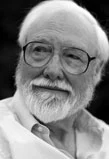
















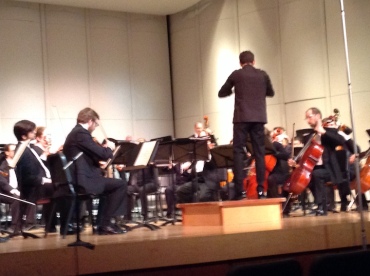
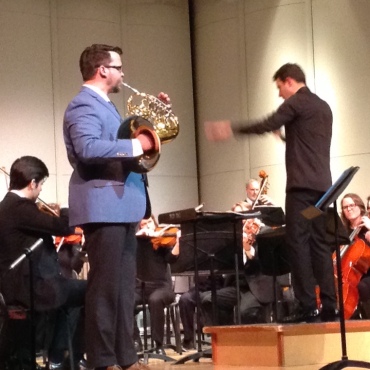
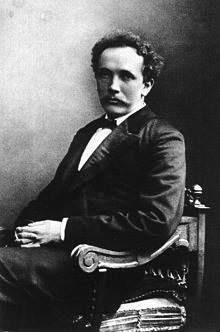
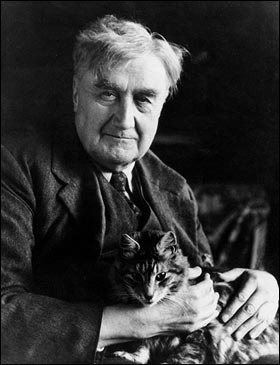
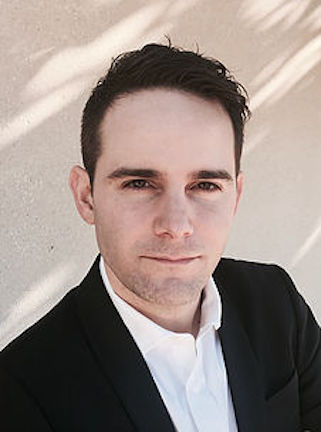
Classical music: During global protests against racism, a longtime fan of the Madison Symphony Orchestra writes a letter to ask for more diversity and African-American composers
4 Comments
PLEASE HELP THE EAR. IF YOU LIKE A CERTAIN BLOG POST, SPREAD THE WORD. FORWARD A LINK TO IT OR, SHARE IT or TAG IT (not just “Like” it) ON FACEBOOK. Performers can use the extra exposure to draw potential audience members to an event. And you might even attract new readers and subscribers to the blog.
By Jacob Stockinger
During the ongoing global protests and demonstrations against police brutality, racism and white privilege, the Madison Symphony Orchestra (below, in a photo by Peter Rodgers) will hold its annual meeting next Tuesday, June 16, at 3:30 p.m.
The meeting is NOT open to the public — as erroneously stated in an earlier version — but just to season subscribers (not single ticket buyers) and members of MSO boards. The meeting will be virtual and held online via Zoom.
During the meeting, a statement about diversity and inclusion will be read, according to the MSO.
If you have questions, you can call Alexis Carreon at (608) 257-3734.
With both the symphony and current events in mind, a longtime MSO subscriber has written the following letter to Manager of Individual Giving Jeff Breisach.
Please read the letter and then let us know what you think.
Do you agree or disagree?
What else would you like to say about the role of MSO in adapting to concerns about racism, injustice and privilege?
Do you have any suggestions?
“Dear J. Breisach:
“Please share my following concerns with those planning the annual meeting of the Madison Symphony Orchestra:
“In light of the recent historic events, I hope MSO will add an item or two to deal with the economic and racial injustice prevalent in Madison, as well as elsewhere in our nation.
“Specifically:
“It is time for MSO to acknowledge its history of white privilege and take some steps to more widely acknowledge the richness of a diverse local audience and classical music history.
Sincerely,
Carol Troyer-Shank
“PS: I have been a MSO ticket holder in the economically denigrated balcony for more than 20 years.
“PS2: The architect and designers clearly thought about making more money — not about safety of attendees — when they designed a balcony to squeeze in more people instead of to allow ease of movement for lower-cost ticket holders. Shame on them! So, of course, all those seats should be filled every time. Even at $5 a ticket, the MSO would gain enormous improvement in their local image.”
Share this:
Tags: #AfircanAmerican, #AfricanAmerican, #AnnualMeeting, #BlackComposer, #BlogPost, #BlogPosting, #BritishComposer, #ChevalierdeSaint-Georges, #ChoralMusic, #CityofMadison, #ConcertHall, #CulturalDiversity, #FacebookPost, #FacebookPosting, #HistoricEvent, #JacobStockinger, #MadisonSymphonyOrchestra, #OrchestralAccompaniment, #OvertureHall, #PoliceBrutality, #PorgyandBess, #RushSeats, #SamuelColeridge-Taylor, #SeasonSubscription, #SocialInjustice, #TheEar, #TicketHolder, #WhitePrivilege, #YouTubevideo, acknowledge, African American, agree, annual, architect, Arts, attendee, audience, balcony, black, blog, board, British, call, Chevalier de Saint Georges, choral music, chorus, Christmas, Classical music, classicalmusic, comment, composer, concern, Concert, concert hall, cost, cultural diversity, demonstration, denigrate, designer, director, disagree, diverse, diversity, ease, economic, empty, enough, ethnic, event, Facebook, February, George Gershwin, georgegershwin, Gershwin, giving, global, hall, hear, historic, History, image, improvement, inclusion, injustice, item, Jacob Stockinger, Joseph de Boulogne, land, letter, like, link, local, Madison, Madison Symphony Orchestra, meeting, Monday, money, movement, MSO, multi-ethnic, Music, nation, often, online, open, opera, Orchestra, our, Overture Center, Overture Hall, participate, People, performer, police brutality, Porgy and Bess, post, posting, poverty, prevalent, programming, protest, protests, public, questions, racial, racially, racism, recent, register, richness, role, Romance, rush seats, safety, Samuel Coleridge-Taylor, Season, seats, shame, share, squeeze, steps, subscription, suggestion, symphony, tag, The Ear, think, ticket, ticket holder, time, town, Tuesday, tune, United States, Violin, virtual, white privilege, Wisconsin, year, YouTube, Zoom